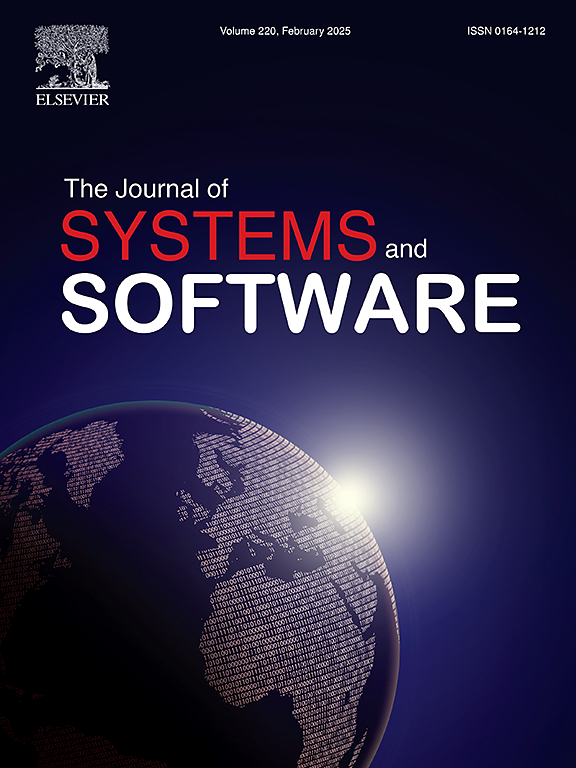Impact of methodological choices on the analysis of code metrics and maintenance
IF 3.7
2区 计算机科学
Q1 COMPUTER SCIENCE, SOFTWARE ENGINEERING
引用次数: 0
Abstract
Many statistical analyses and prediction models rely on past data about how a system evolves to learn and anticipate the number of changes and bugs it will have in the future. As a software engineer or data scientist creates these models, they need to make several methodological choices such as deciding on size measurements, whether size should be controlled, from what time range metrics should be obtained, etc. In this work, we demonstrate how different methodological decisions can cause practitioners to reach conclusions that are significantly and meaningfully different. For example, when measuring SLOC from evolving source code of a method, one could decide to use the initial, median, average, final, or a per-change measure of method size. These decisions matter; for instance, some prior studies observed better performance of code metrics for bug prediction in general, while other studies found negative results when performance was evaluated through a time-based approach. Understanding the impact of these different methodological decisions is especially important given the increasing significance of approaches that use these large datasets for software analysis tasks. This paper can impact both practitioners and researchers by helping them understand which of the methodological choices underpinning their analyses are important, and which are not; this can lead to more consistency among research studies and improved decision-making for deployed analyses.
方法选择对代码度量和维护分析的影响
许多统计分析和预测模型都依赖于过去有关系统演变过程的数据来学习和预测未来的变化和错误数量。当软件工程师或数据科学家创建这些模型时,他们需要做出一些方法上的选择,例如决定规模测量、是否应该控制规模、应该从哪个时间范围获取指标等。在这项工作中,我们展示了不同的方法论决策会如何导致实践者得出意义重大的不同结论。例如,在测量方法源代码演变过程中的 SLOC 时,我们可以决定使用方法规模的初始、中位数、平均、最终或每变化测量值。这些决定都很重要;例如,之前的一些研究观察到,代码度量在一般情况下对错误预测有更好的性能,而其他研究则发现,当通过基于时间的方法评估性能时,结果是负面的。鉴于在软件分析任务中使用这些大型数据集的方法越来越重要,了解这些不同方法决策的影响尤为重要。本文可以帮助从业人员和研究人员了解哪些分析方法选择是重要的,哪些是不重要的,从而对他们产生影响;这可以提高研究的一致性,改进部署分析的决策。
本文章由计算机程序翻译,如有差异,请以英文原文为准。
求助全文
约1分钟内获得全文
求助全文
来源期刊

Journal of Systems and Software
工程技术-计算机:理论方法
CiteScore
8.60
自引率
5.70%
发文量
193
审稿时长
16 weeks
期刊介绍:
The Journal of Systems and Software publishes papers covering all aspects of software engineering and related hardware-software-systems issues. All articles should include a validation of the idea presented, e.g. through case studies, experiments, or systematic comparisons with other approaches already in practice. Topics of interest include, but are not limited to:
•Methods and tools for, and empirical studies on, software requirements, design, architecture, verification and validation, maintenance and evolution
•Agile, model-driven, service-oriented, open source and global software development
•Approaches for mobile, multiprocessing, real-time, distributed, cloud-based, dependable and virtualized systems
•Human factors and management concerns of software development
•Data management and big data issues of software systems
•Metrics and evaluation, data mining of software development resources
•Business and economic aspects of software development processes
The journal welcomes state-of-the-art surveys and reports of practical experience for all of these topics.
 求助内容:
求助内容: 应助结果提醒方式:
应助结果提醒方式:


